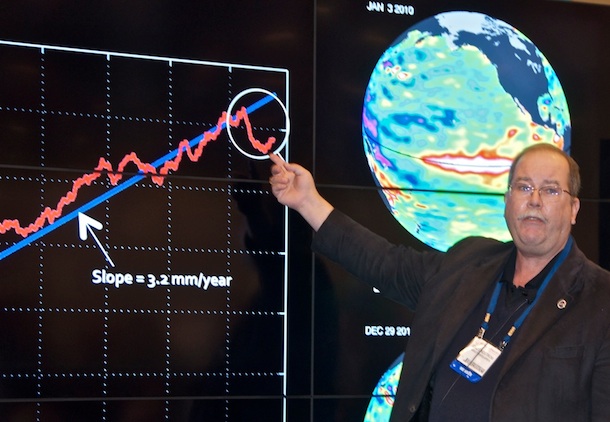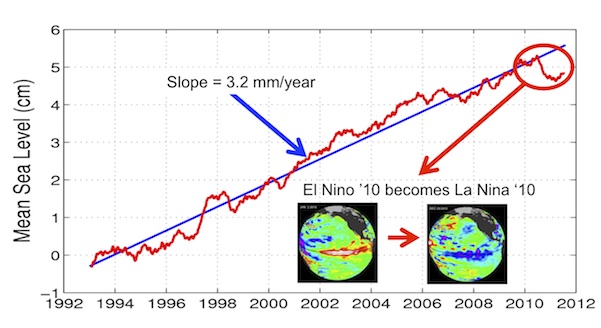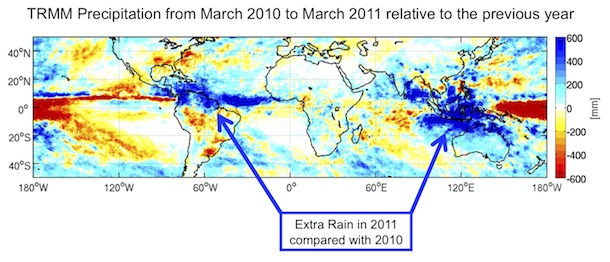
The 2011 La Niña, one of the strongest in recent decades, absorbed so much moisture from the oceans and dropped it as precipitation over northern parts of Australia and South America that global mean sea levels fell by about half a centimeter. That was the key point that Eric Lindstrom, an oceanographer based at NASA headquarters, made today while giving a presentation  at NASA’s outreach booth at the American Geophysical Union’s fall meeting.
at NASA’s outreach booth at the American Geophysical Union’s fall meeting.
He gave the talk with the help of a sophisticated visualization system — called the Hyperwall — that’s capable of displaying large sets of data. The system consists of nine 42-50“ flat-screen monitors arranged in a 3 X 3 array.
As Lindstrom pointed out, the fast transition from the 2009-10 El Niño to the 2010-11 La Niña triggered changes in precipitation patterns across the tropics, transferring enough water over land to cause global mean sea level to fall during the spring and summer of 2011. Data from NASA’s GRACE and TRMM satellites have confirmed that the “extra” water and rain has ended up over land as freshwater (see below). The drop in sea level happened despite the background rate of global mean sea level rise, which has been fairly steady at 3.2 millimeters per year since the early 1990s.
 at NASA’s outreach booth at the American Geophysical Union’s fall meeting.
at NASA’s outreach booth at the American Geophysical Union’s fall meeting. He gave the talk with the help of a sophisticated visualization system — called the Hyperwall — that’s capable of displaying large sets of data. The system consists of nine 42-50“ flat-screen monitors arranged in a 3 X 3 array.
As Lindstrom pointed out, the fast transition from the 2009-10 El Niño to the 2010-11 La Niña triggered changes in precipitation patterns across the tropics, transferring enough water over land to cause global mean sea level to fall during the spring and summer of 2011. Data from NASA’s GRACE and TRMM satellites have confirmed that the “extra” water and rain has ended up over land as freshwater (see below). The drop in sea level happened despite the background rate of global mean sea level rise, which has been fairly steady at 3.2 millimeters per year since the early 1990s.

At AGU? Be sure and check out the ongoing exhibit activities (pdf) and full schedule of hyperwall presentations (pdf) at NASA’s exhibit (#1637). All the figures shown in this post are available in the Dynamic Oceans presentation on the Earth Observing System’s Hyperwall page. Blog text by Heather Hyre. Photo by Winnie Humberson.

Nice job Heather! Interesting research as well!